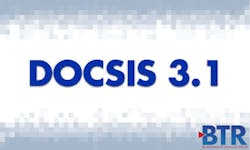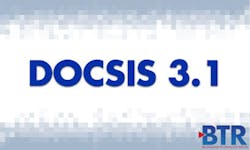Although DOCSIS 3.1 really only came out of the gate late last year, CableLabs CTO Ralph Brown has said that with the specter of 1 Gbps downstream looming on the 2016 horizon, the industry needs to adhere to a brisk timetable when it comes to the spec enhancement.Speaking at Cable Congress earlier this month, Brown said DOCSIS 3.1 should be finished this year, with products released in 2014 and/or early 2015 and initial deployments in 2015, according to media reports.DOCSIS 3.0 has been "widely" successful, and with it, the number of channels has scaled from four to eight and now to 24, said John Chapman, engineering fellow and CTO of Cisco's (NASDAQ:CSCO) cable access business unit. So why the rush on 3.1?"The next step past 24 channels would have involved new ASICs. As long as we are investing in ASICs," Chapman said, "it was worthwhile going shopping and seeing what the best technology was and doing an update to DOCSIS." Chapman is helping to develop DOCSIS 3.1.DOCSIS 3.1 is an update to the PHY layer that will bump up spectrum density. While a DOCSIS 3.0 QAM carrier is 6 MHz wide, DOCSIS 3.1 introduces orthogonal frequency division multiplexing (OFDM) and its "skinny" carriers. With carriers approximately 25 kHz to 50 kHz wide, there can be thousands of them instead of 100, for example, Chapman said. "(And) we are adding some ways we can play around with optimizing profiles with OFDM."The "real magic" of DOCSIS 3.1, however, is a new method of forward error correction (FEC) called low-density parity check (LDPC), which allows for a higher resilience to noise and the ability to operate with a higher order of modulation, Chapman said. On an existing plant, 1024-QAM could be run where the noise floor previously was acceptable only for 256-QAM."It's about bits per hertz," Chapman said. "Making this move is an increase from 8 bits to 10 bits, which is a 25% increase in density."Another innovation DOCSIS 3.1 will bring is built-in energy management. Cable modems will have a sleep mode that will be built into the protocol from day one. The trick is still maintaining synchronization. How long before the modem has to be woken up? "In 3.1, we will be able to shut the cable modem circuitry off for a period of time - long enough to get power savings," Chapman said.Although DOCSIS 3.1 is on its way, cable operators do not have to wait. "There are 24-channel cable modems coming out this year. If people want to deploy that bandwidth, by all means they should. They should deploy as much 3.0 ... as they need," Chapman said.The reason is that DOCSIS 3.1 will be backward compatible. A 3.1 modem will work on a 3.0 headend for example. 3.1 will reuse the "majority" of 3.0 software, and 3.1 can use all the spectrum already allocated for 3.0."That is what makes the backwards compatibility (angle) so compelling," Chapman said.Monta Monaco Hernon is a free-lance writer. She can be reached at [email protected].






